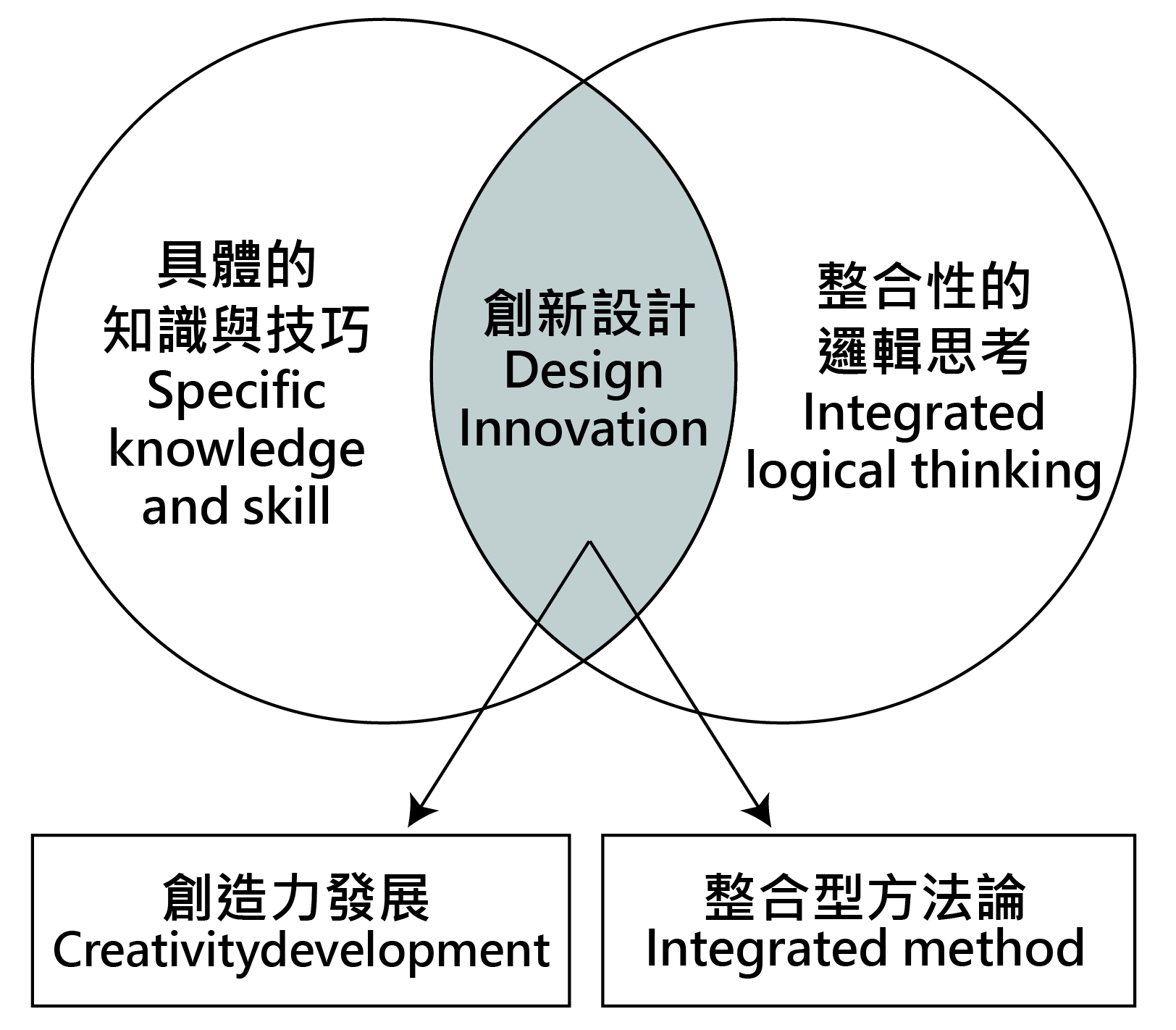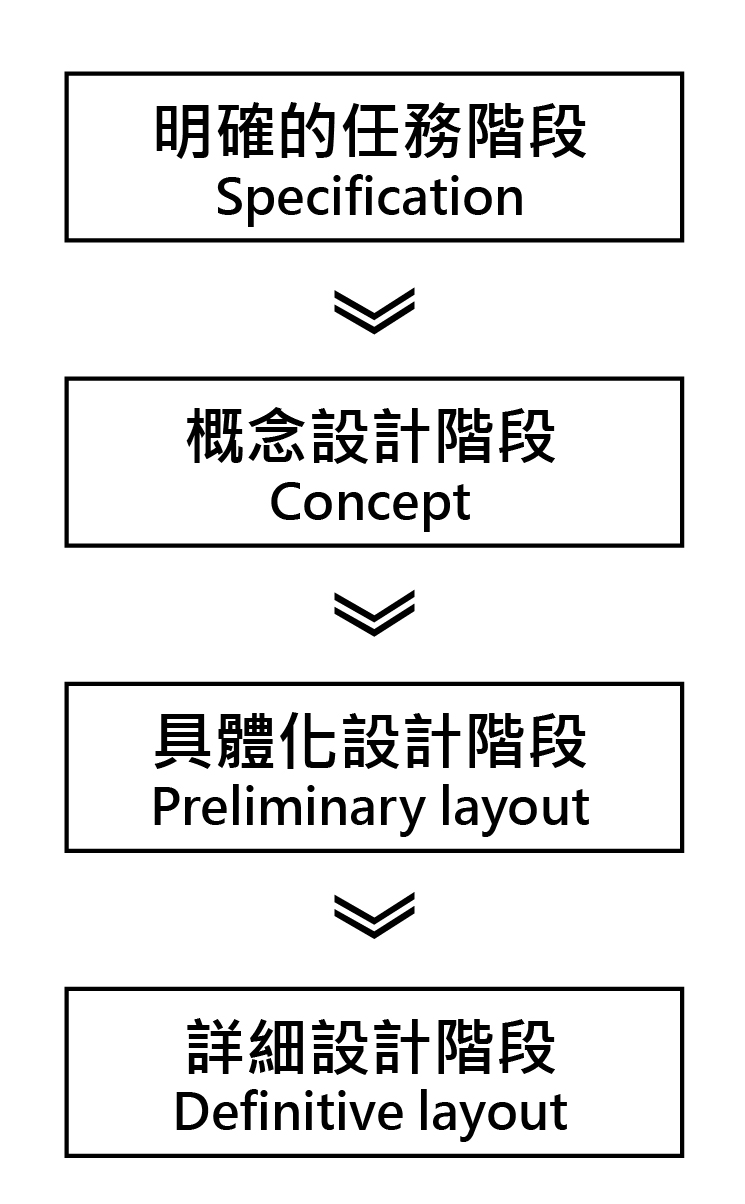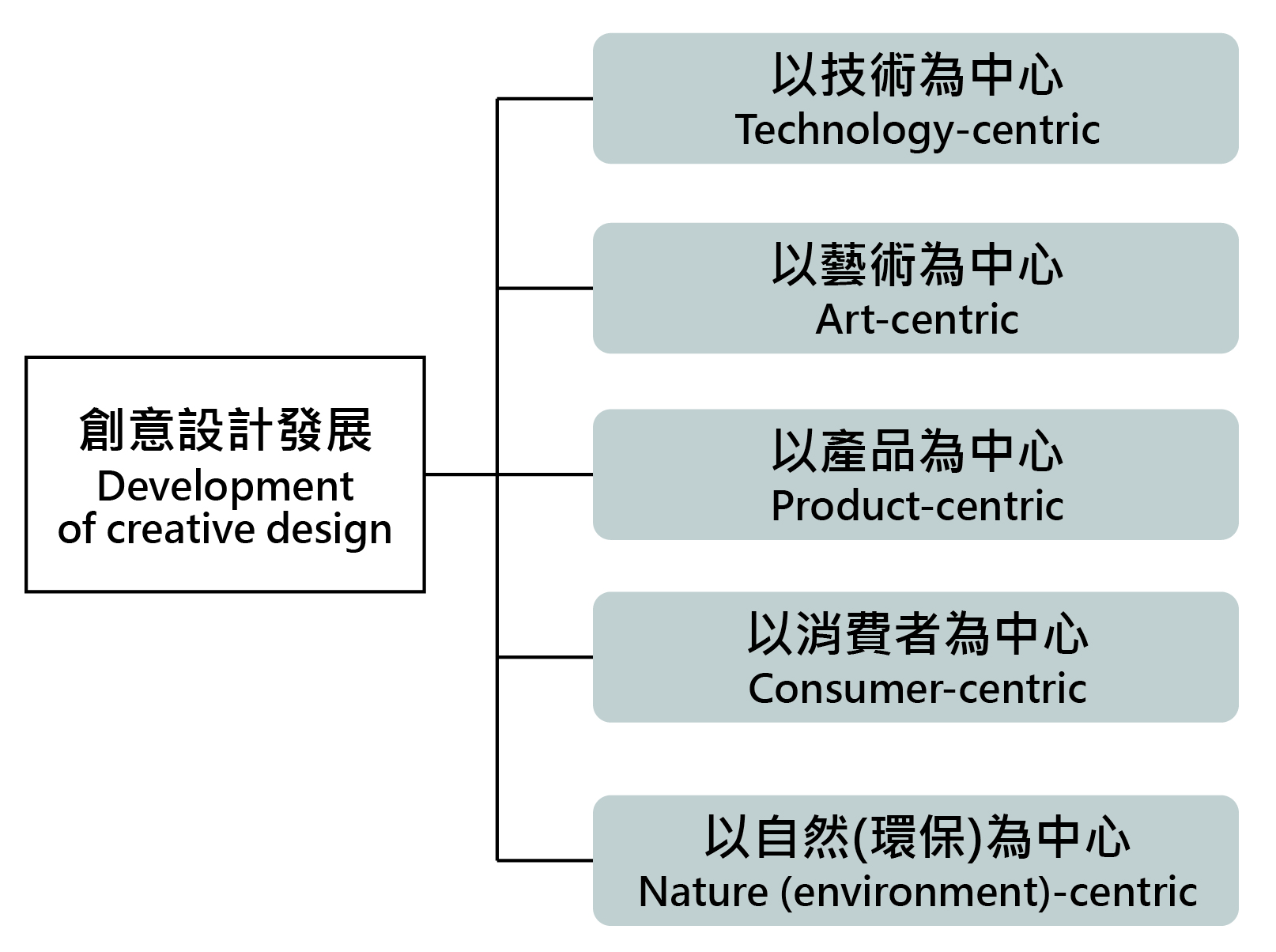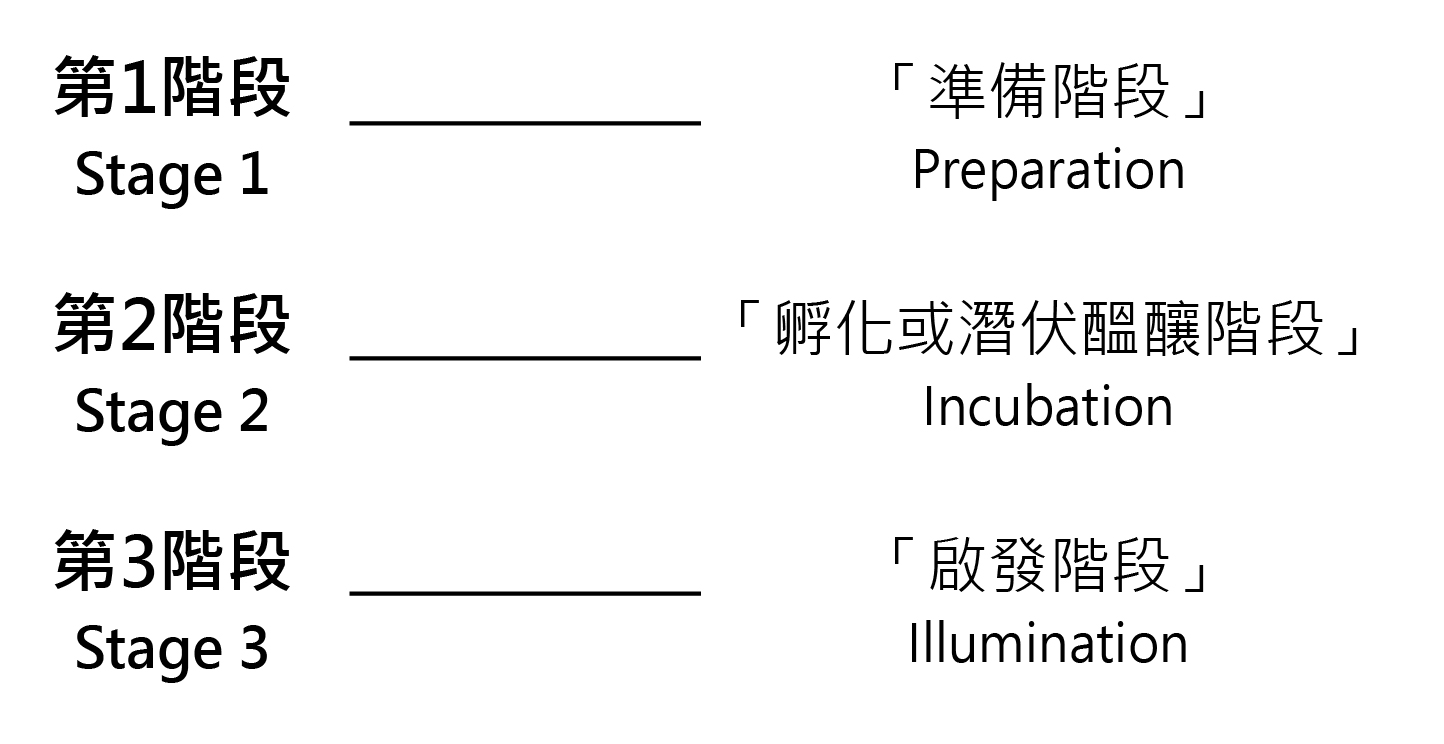1. Preface
The domestic policy and results of design education reflect not only Taiwan’s design competence in the global arena but also indirectly demonstrate the country’s investment in the area of design. Therefore, the improvement and rumination on design teaching is a critical topic. Personally, I believe the purpose of the core design concept lectures is to hand over the design knowledge, to analyze and discuss the implementation technique, and to guide students through design thinking. The mandatory courses of design related schools or departments in Taiwan can be classified into 2 types: one is specific knowledge and technique, where skills and approaches are taught, such as design principles, basic design, introduction to structure, introduction to design, form principles, color planning, design drawing, computer aided drawing and so on; the other is integrated logical thinking, such as design methods, design thinking and etc. These courses are mainly placed in year 1-3 in the university, and followed by the design innovation and related courses for the graduation project in the fourth year. Overall, the process of education and training is to extend the basics learned in the first two years to the practical design training in the third and the fourth year, when students get to showcase their creativity and innovation in design.
Driven by the technology of Artificial Intelligence, various industries, including product, service, process, business model, business activities have gone digital. Under such trends, design innovation is a momentum that can better adapt to new environments (Brenner et al., 2014). The Forbes magazine quoted Steve Jobs in the innovation discourse in 2013, “Innovation distinguishes between a leader and a follower.” Many scholars believe that innovation is often mainly creative information processing (DeMeyer 1985; Monenaert et al., 2000). Apparently the innovation and creativity in design requires all sorts of technique, method and condition. Hence, the connotation of design education determines the criteria for learning. Namely, the thinking ability and skills to problem solving, such as problem-based learning (PBL) and understanding complicated problems; the ability of simplifying problems and utilizing design to solve them to achieve design innovation, and the capability to create value in the product, the service, the concept, the order and the process. Unfolding the essence of design education, as shown in Figure 1, it brings together the specific knowledge and skills and the integrated logical thinking to discuss the application of design innovation within. The retrospection of design innovation theories also discusses the concept of design education when it looks into the experiences of using the term of “design innovation” in the design industry. It helps understand the close relationship between design and innovation, and helps describe the discipline and profession of design, and offers students a learning indicator with its references in design education and research.
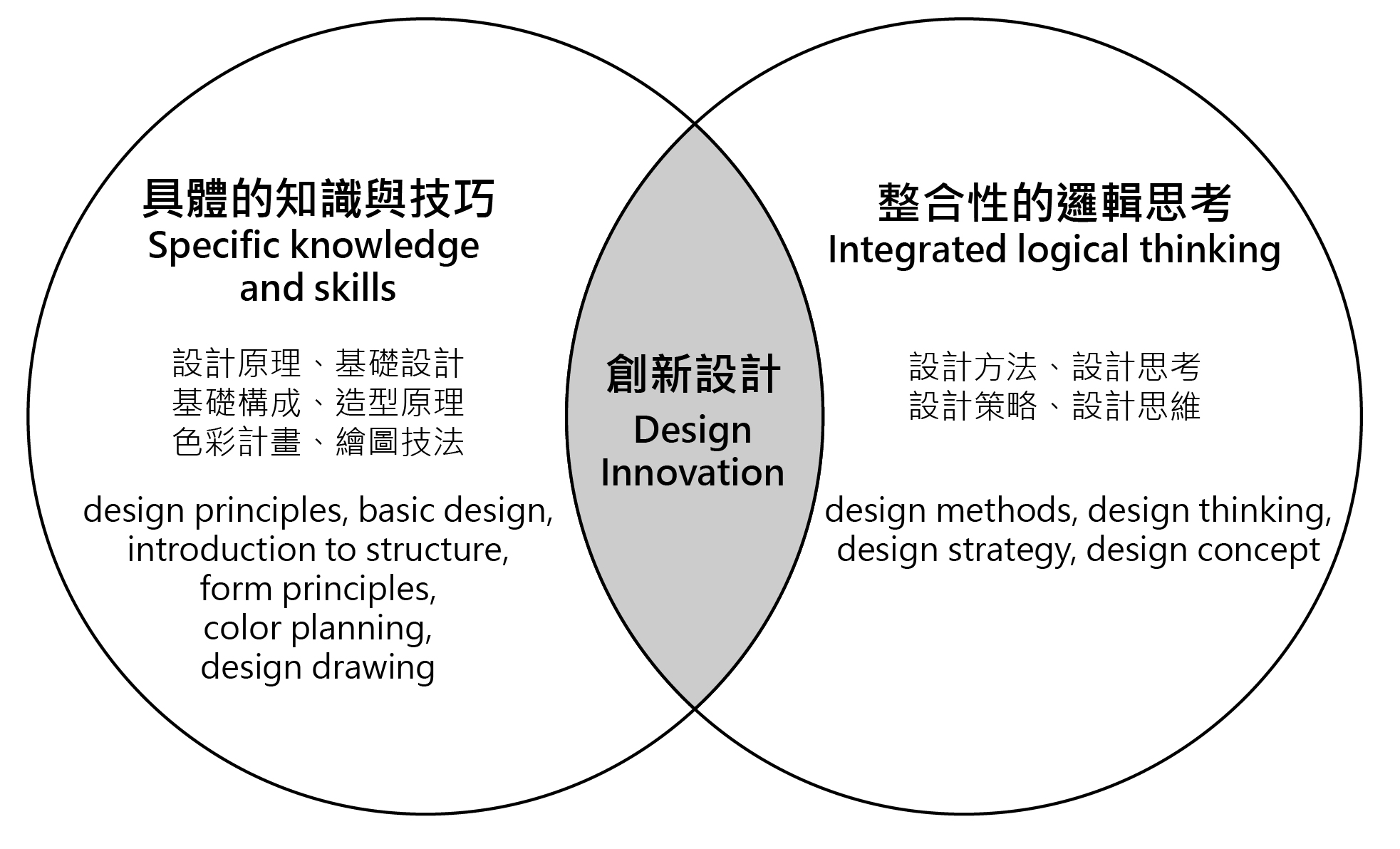
Figure(1) Relationship between the basic design courses and design innovation (as this article argues)
2. Design Innovation
The term “Design Innovation”, although not defined universally in the profession of design and academia, has been frequently cited in relevant design magazines, academic journals, and corporate images (Cawood, 1997; Chayutsahakij & Poggenpohl, 2002). It can be incorporated for the brainstorming in the initial introduction, manufacturing in the process of conversion and marketing in the discussion afterwards in an industry. Freeman (1982) described design as the core function of innovation, and innovation as the driver of economy. In the Theory of Economic Development, an innovation theory was proposed: innovation is the main driving force in the development of capitalistic economy (Schumpeter, 1934). Rothwell and Gardiner (1988) described innovation by 2 levels: incremental innovation and radical innovation, as shown in Figure 2. Radical innovation accounts for only 10% of overall innovation, if introduced to the market, it could lead to the increase of various extended innovation of high technical change. Economists once pointed out the impact of technical revolution to the economy, and its relation with a nation’s wealth (Smith, 1778). In Smith’s theory, innovation development could result in the “progress of art”, and would further elevate professionalism and productivity (Meier & Baldwin, 1957). In contrast to radical innovation, 90% of innovation is incremental innovation. Take it as a reference for design education, we can see that the design related education is more inclined to incremental design; pursuant with the requirement from the industries in different times, corresponding skills and detailed changes have been made to improve design and to achieve the purpose of innovation (Figure 2).
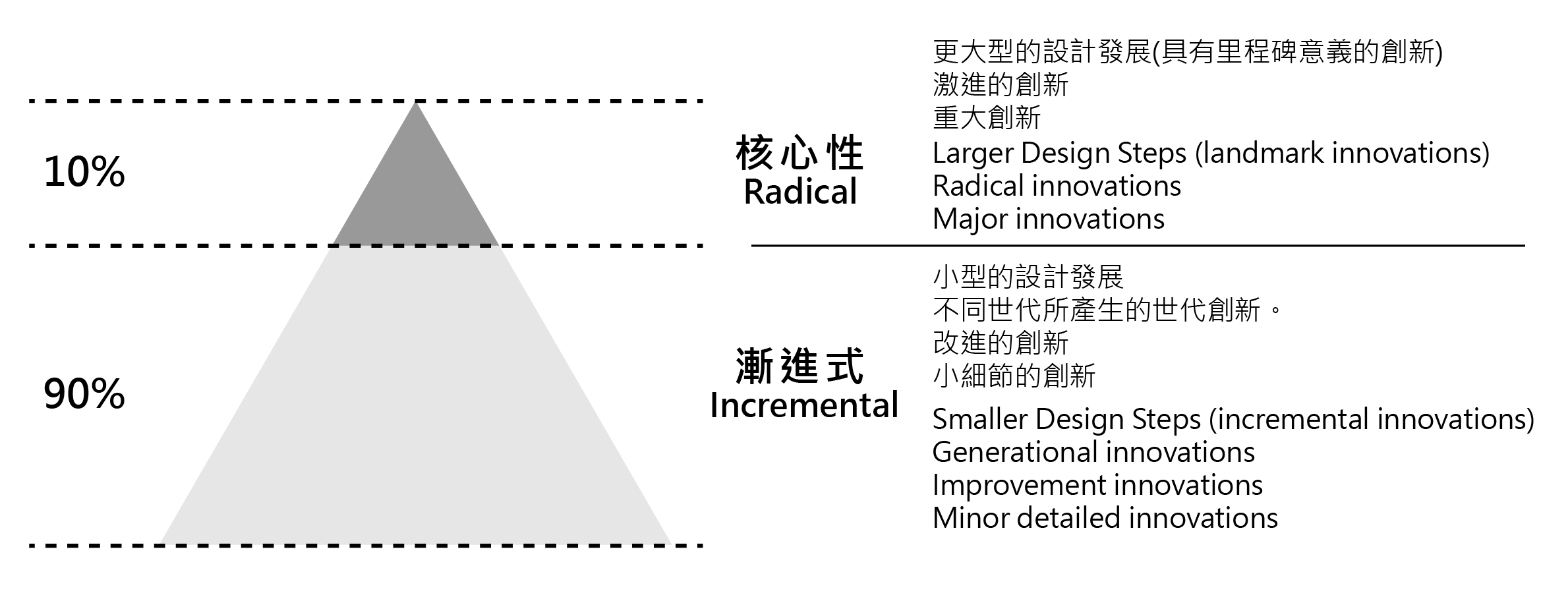
Figure (2) Levels of technical change (Rothwell and Gardiner, 1988)
The main areas of design proposed by Shirley and Henn (1988), and Walsh et al. (1992) consolidated the facets where design innovation is more flexibly adopted in design education, as shown in Figure 3. As technologies develop, multimedia design is also evolving rapidly in the scope of design innovation. Oakley (1990) is of the opinion that the work on design innovation should be dedicated to “transform invention into successful innovation, or expand its practicality.” Therefore, the design work is described as “to implement more accurately, in the way of micro-adjustment, to satisfy our demands.” And that 99% of the new products in the market are the derivatives of the current product and technology. Such concept stresses the importance of design as a job, and how design introduces novelty by expanding the existing innovative practicality. Oakley gives examples to clarify his definition, such as that the cassette tape system had been improved and made into a walkman stereo, to MP3, and even to the Apps we installed in our smartphones today in order to address the demand of different times, as shown in Figure 4.
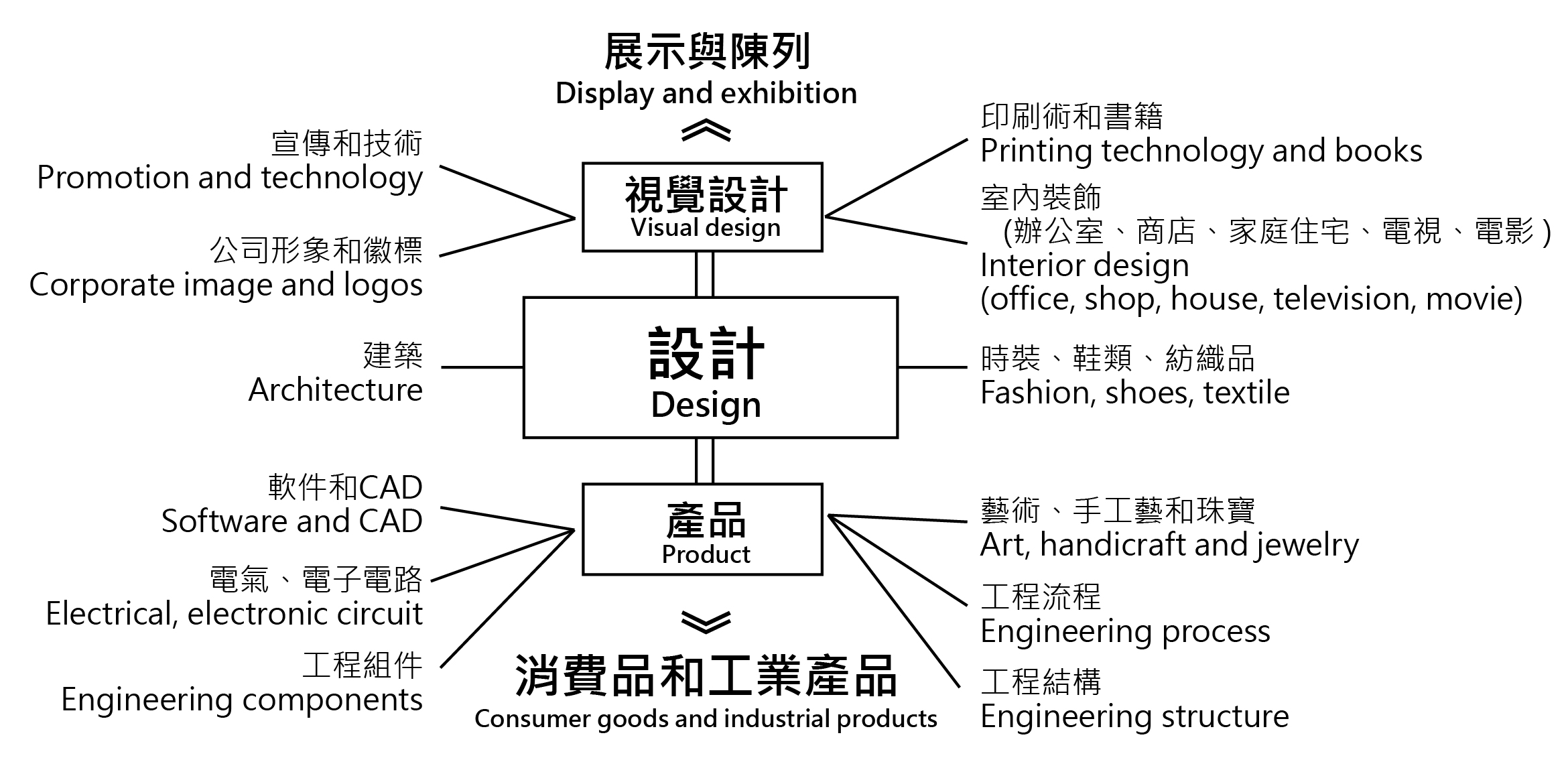
Figure (3) Main areas of design (Shirley and Henn, 1988; Walsh et al., 1992).
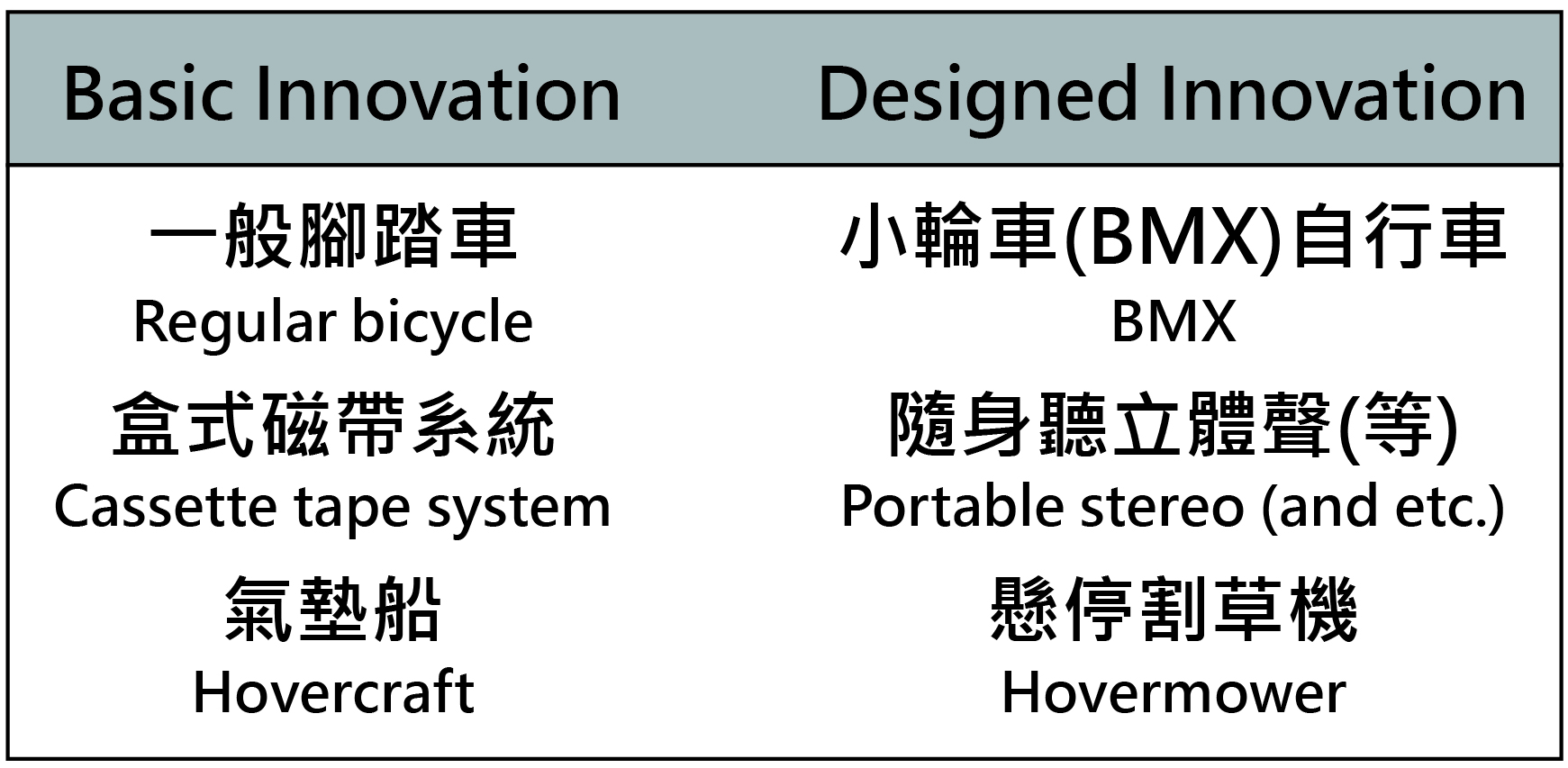
Figure (4) Cases of increased market potential through applying design innovation to basic products (Oakley, 1990)
3. The application of innovation in design teaching
The final result of creative activity is innovation, is knowledge-based novelty, is to extend new products of value, or to manifest innovation in the process or services (Leonard & Swap, 1999). Therefore, the article divides creative activity in design teaching into two types, one is the integrated method, another is creativity development, as illustrated in Figure 5.
Integrated method originated from Behaviorism and management theories, it needs to go through the process of diverging and converging multiple times. Many scholars have also developed various methodologies for such application. The creative design theory of German scholars Pahl and Beitz (1977) emphasizes step-by-step analysis. From the process of qualification to quantification, each stage is made from the result of improvement made from the previous stage in a systematic manner. They specified the four stages of design as demonstrated in Figure 6, and their model specifically lays out the steps for design development.
Figure (5) The model argued in this article
Figure (6) The design process by Pahl and Beitz
Utterback and Abernathy (1975) defined product innovation as “a new technology or a combination of technologies introduced to meet the requirements of the user or the market.” The innovation process contains a series of sub-processes, and they include basic research, design, development, prototyping and testing. This is “the process to convert technology, market requirement and opportunity into the new products to be launched in the market.” (Walsh et. al., 1992) Researchers have also suggested creativity development can be categorized into the following 5 orientations: technology, arts, product, consumer and environment (Figure 7). If the integrated logical thinking and the specific knowledge and skills in design teaching proposed in this article are applied to the 5 orientations, one could achieve design innovation.
Figure (7) Design basics theory (Wen, 2010)
The development of creativity pertains to various psychological and environmental factors. Csikszentmihalyi (1996) suggests creativity is an idea with value, and could be a new way to a solution, a new design, new concept, new artform and so on. Weisberg (1986) proposes from the cognitive perspective that creativity is a form of problem solving, and the process of which has to be step by step. Simon (1996) also thinks the creative process should explore and verify more alternatives, and find out a creative solution instead of just discussing how the problem arises. Wang and Siu (2011) compile the creative thinking process, including analysing, generating and evaluating the process of convergent and divergent thinking, as shown in Figure 8. Csikszentmihalyi (1996) puts forth that creativity is the interaction among domain, field and individual person (Figure 9). Creativity cannot be regarded as the standard of an individual person as a creative existence, instead, its value can only be determined by the reviewer from the society.
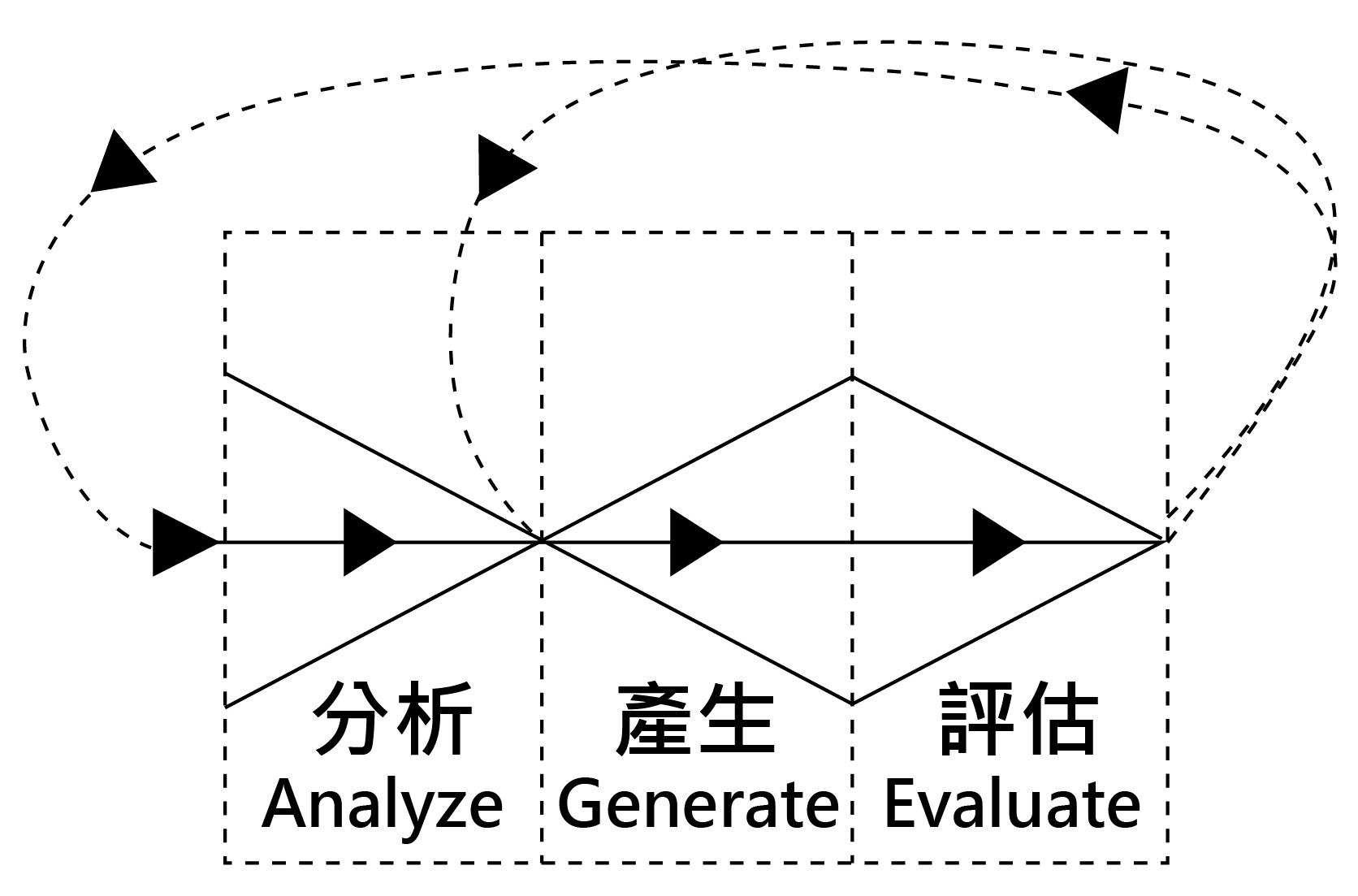
Figure (8) Process of creative thinking
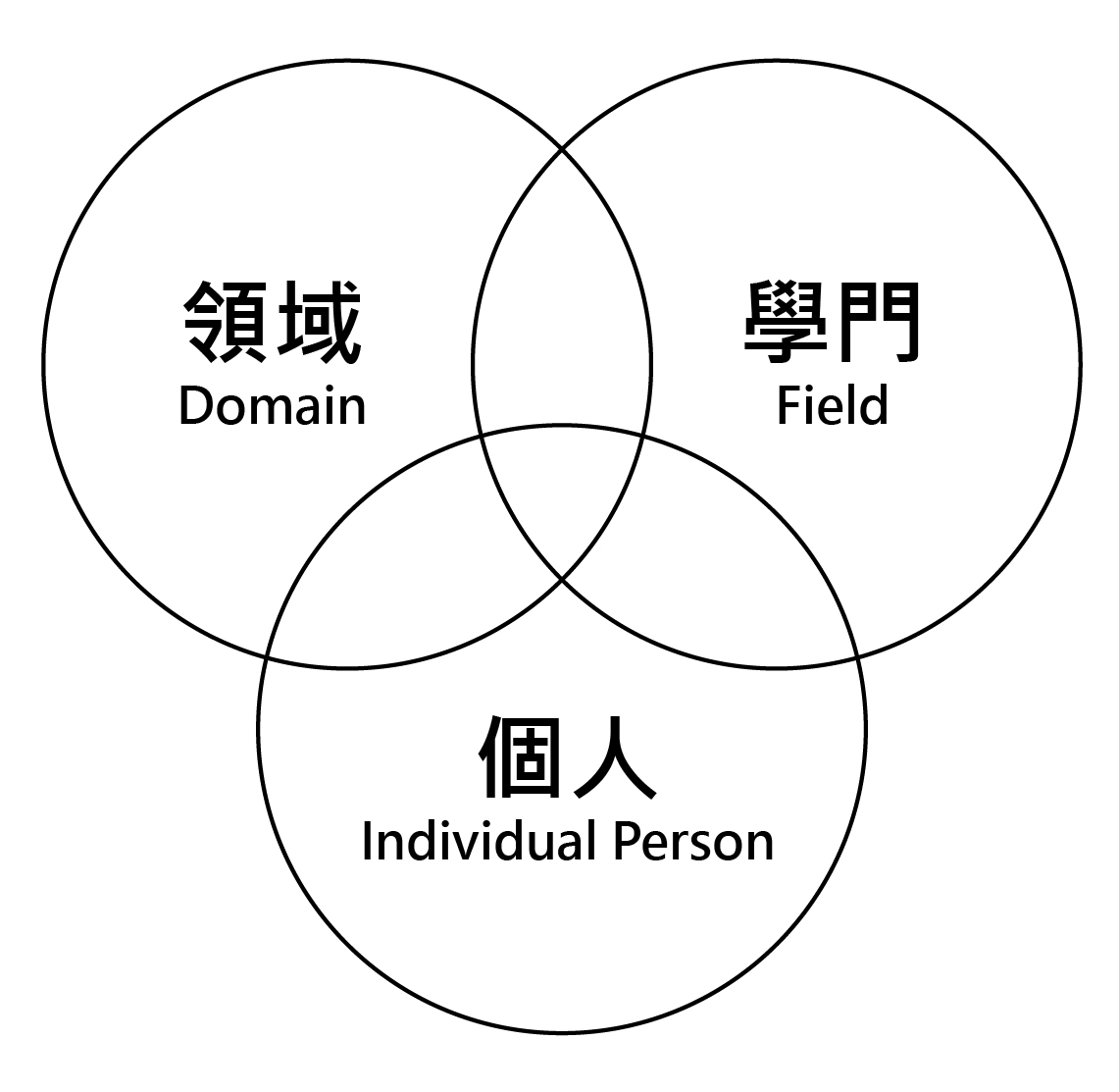
Figure (9) Impact of creativity proposed by Csikszentmihalyi (1996)
In the study of the course of creativity, Helmholtz (1896) and Wallas (1926) delineate the 4-stage model of creativity, as seen in Figure 10. They are: 1. preparation, thinking about the problem; 2. incubation, a surge in the subconsciousness, where new combinations are likely to generate, this stage is considered the most creative part in the course of creativity; 3. Illumination, a quick moment of insight that guides you to the solution.
Figure (10) The 4 Stages of Creativity put forth by Helmholtz (1896) and Wallas (1926)
4. Conclusion
This article reviews the design innovation related researches from the perspective of design education in order to understand the relations between design education and design innovation. It goes over the courses covered in the current design education, including specific knowledge and skills, and integrated logical thinking; and what sort of creative results could be generated under the two categories of design education. The author summarized and proposed a model (Figure 5) to discuss the key relations, and described that creative development and the integrated method are covered in the design innovation theories. With respect to specific knowledge and skills, students from the design related schools or departments should equip themselves with the skill of drawing. Related research indicated the drawing behavior amid the process of design implementation helps stimulate and develop design creativity, and also proved that a draft can stimulate designers’ thinking in the process of design and generate new creativity (Goldschmidt, 1994). Through understanding the relation between design and education, one is able to harness the effect of design and the purpose of design education. Lastly, the review on the design innovation theories also proposed further discourses on the term “design innovation” in design education, which can be a reference for concepts relating to cross-discipline design in the future.
5. References
Brenner W, Karagiannis D, Kolbe L, Krüger J, Leifer L, Lamberti HJ, Leimeister J, Österle H, Petri C et al. (2014) User, use & utility research. The digital user as new design perspective in business and information systems engineering. Business & Information Systems Engineering 6(1):55–61.
Cawood, G.(1997). Design Innovation and Culture in SMEs, the Design Management Journal, Volume 8, Number 4, fall 1997.
Csikszentmihalyi, M. (1996). Creativity: flow and the psychology of discovery and invention. New York: HarperCollins.
Chayutsahakij,P. and Poggenpohl, S.( 2002). User- Centered Innovation: The Interplay between User-Research and Design Innovation, Proceedings of The European Academy of Management 2nd Annual Conference on Innovative Research in Management(EURAM), Stockholm, Sweden.
DeMeyer, A.C.L.(1985). The flow of technological innovation in an R&D department, in: Research Policy, Vol. 14, 315-328.
Freeman, C.(1982). The Economics of Industrial Innovation,2nd edition, Frances Pinter, London.
Helmholtz, H. von (1896). Vorträge und Reden. Brunswick, Germany: Friedrich Vieweg.
Goldschmidt, G. (1994). On visual design thinking: the vis kids of architecture. Design Studies, Vol. 15(2), 158-174.
Moenaert, R.K.; Caeldries, F; Lievens, A.; Wauters, E.(2000). Communication flows in international product innovation teams, in: Journal of Product Innovation Management, Vol. 17 (5), p. 360-377.
Meier, M. G. and Baldwin E. R.(1957). Economic Development: Theory, History, Policy. John Wiley & Sons, Inc., New York.
Oakley, M.(1990). Design Management: A Handbook of Issues & Methods,Basil Blackwell, Oxford.
Pahl G. & Beitz W.( 1977-2014). Engineering Design a Systematic Approach, Springer, 8 editions.
Rothwell, R. and Gardiner, P. (1988). Re-innovation and Robust Designs: Producer and User Benefits, Journal of Marketing Management, 3/3,64-72.
Simon, H. A. (1996). The sciences of the artificial (3rd ed.). MIT Press. Cambridge. MA
See Smith, Adam (1778). An Inquiry into the Nature and Causes of the Wealth of Nations. 1 (2 ed.). London: W. Strahan; T. Cadell.; Smith, Adam (1778). An Inquiry into the Nature and Causes of the Wealth of Nations. 2 (2 ed.). London: W. Strahan; T. Cadell. via Google Books
Schumpeter, J. A.(1934). The Theory of Economic Development, Harvard University Press, Cambridge, Massachusetts.
Shirley, R. and Henn. D. (1988). Support for Design: Final Evaluation Report, Department of Trade and Industry, Assessment Unit, Research and Technology Policy Division, London.
Walsh, V., Roy, R., Bruce, M.(1992). PotterWinning By Design: Technology, Product Design and International Competitiveness Basil Blackwell, Oxford.
Wong, Y. L. and Siu, K. W. M. (2011). A model of creative design process for fostering creativity of students in design education. Journal of Technology and Design Education, Springer.
Wallas, G. (1926). The art of thought. New York: Harcourt. Brace.
Wen J. (2010). Survey on Innovation Design Theories and Methods of Products, Packging Engineering Vol.31 No.2.
Weisberg, R. W. (1986). Creativity: Genius and other myths. New York: Freeman.
Schumpeter, J. A., 1934. The Theory of Economic Development, Harvard University Press, Cambridge, S





